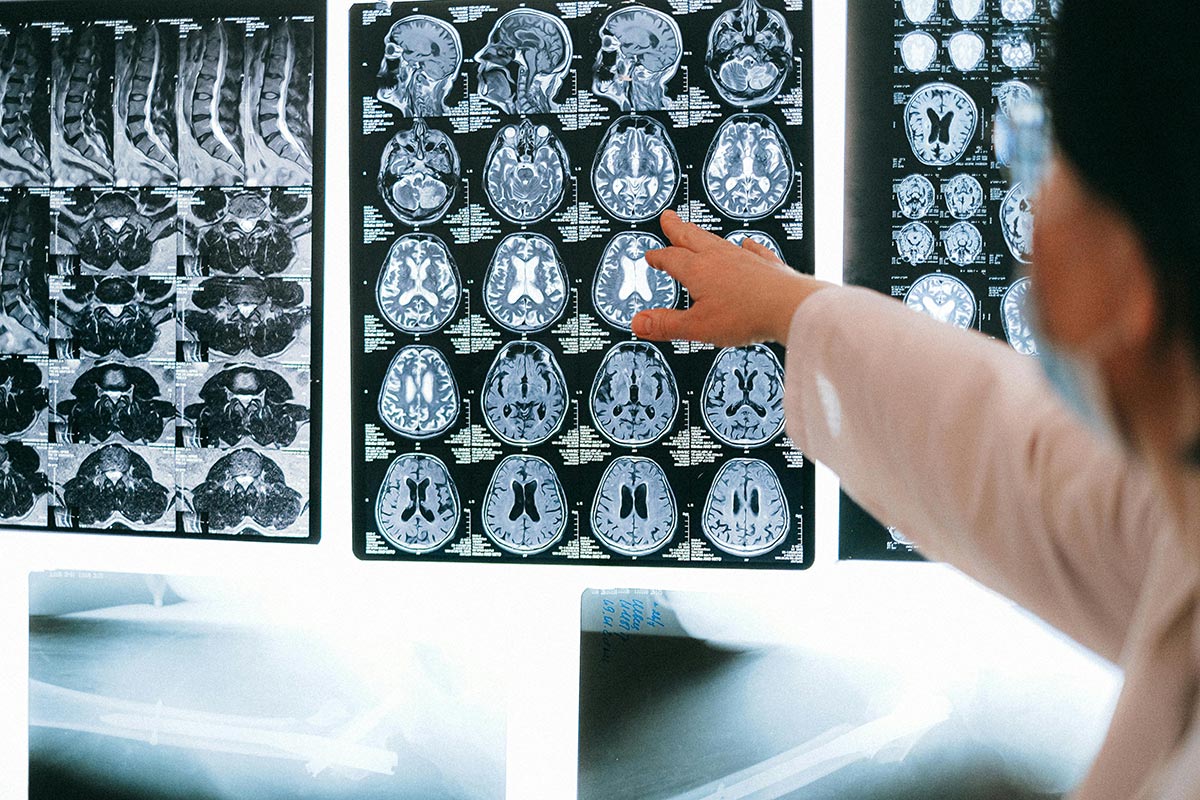
Understanding the Complex Nature of Chronic Wounds
Chronic wounds present a significant challenge in modern healthcare, affecting millions worldwide. These wounds, unable to progress through the normal healing phases, often result in pain, infection, and substantial healthcare costs. Understanding the treatments available for these difficult-to-heal wounds is crucial for both patients and medical practitioners. This article delves into the intricacies of chronic wound healing and the intensive care methods that can aid in effective treatment.
The Distinctive Nature of Chronic Wound Healing

What is the difference between normal wound healing and chronic wound healing?
The healing of normal wounds follows a well-structured process taking approximately 4 to 6 weeks. This process is categorized into distinct phases: hemostasis, inflammation, proliferation, and remodeling. Each phase plays a vital role in tissue recovery.
However, when it comes to chronic wounds, the situation becomes significantly different. Chronic wounds do not adhere to this standard healing timeline. Instead, they can remain unhealed for weeks, months, or even years. Often, these wounds become stuck in the inflammatory phase of healing. This stagnation leads to persistent issues such as excessive inflammation, increased pain, and a higher risk of infection.
Several factors contribute to the stalling of chronic wounds. Conditions like diabetes impede circulation and impair the healing response, while smoking reduces oxygen delivery to wound sites, thus slowing recovery. Poor nutritional status can also hinder the healing processes, resulting in inadequate tissue repair.
Additionally, biofilm—which are colonies of bacteria or fungi—can form on chronic wounds, inhibiting healing by creating a hostile environment for essential cellular activities. This combination of factors complicates treatment and emphasizes the need for specialized care tailored to the unique nature of chronic wounds.
| Aspect | Normal Wound Healing | Chronic Wound Healing |
|---|---|---|
| Timeline | 4 to 6 weeks | More than 3 months |
| Phases | Hemostasis, Inflammation, Proliferation, Remodeling | Often stalled in Inflammatory phase |
| Contributing Factors | Minor injuries, good nutrition, adequate blood flow | Diabetes, smoking, poor nutrition, biofilms |
Common Causes Behind Chronic Wounds

What are the main causes of chronic wounds?
Chronic wounds often arise from a combination of factors that impede the normal healing process. Key contributors include:
- Diabetes: High blood sugar levels can damage nerves and blood vessels, leading to poor circulation and increased risk of foot ulcers.
- Vascular Diseases: Conditions such as arterial and venous insufficiency result in elevated pressure and inadequate blood flow, making it harder for wounds to heal.
- Poor Circulation: Reduced blood flow due to vascular issues can prevent vital nutrients and oxygen from reaching the wound site, slowing recovery.
- Limited Mobility: Inability to move can increase pressure on certain body areas, resulting in pressure ulcers.
- Infections: The presence of infection increases inflammation and can stall the healing process dramatically.
- Lifestyle Factors: Poor nutrition, particularly deficiencies in vitamins and protein, along with habits such as smoking, significantly hinder wound healing.
An integrative approach that focuses on managing the underlying causes, such as blood sugar control in diabetes or improving circulation through physical therapy, is essential to address chronic wounds effectively.
Comprehensive Treatment Approaches for Chronic Wounds

What are the treatment options for chronic wounds?
Treatment options for chronic wounds involve a multifaceted approach designed to promote healing while tackling underlying health issues. Fundamental strategies include:
Debridement: This is the process of removing dead or infected tissue from the wound. It is crucial as it enhances healing potential by creating a clean wound bed and can be done using various methods such as sharp, surgical, or enzymatic techniques.
Cleaning and dressing: Wounds should be regularly cleaned, often with saline solution, and covered with appropriate dressings such as hydrogel, alginate, or hydrocolloid, tailored to the wound's specific characteristics.
Negative pressure wound therapy (NPWT): This advanced treatment uses a vacuum to enhance blood circulation, remove excess fluid, and promote tissue growth. It has been shown to significantly improve healing rates for many patients.
Skin grafts: For larger chronic wounds, skin grafting is considered to facilitate closure and enhance healing outcomes. This is particularly useful for wounds that resist closure through conventional methods.
Antibiotics and hyperbaric oxygen therapy: Infections are common in chronic wounds, making antibiotic treatment essential. Hyperbaric oxygen therapy is another promising option, particularly beneficial for diabetic-related wounds, as it enhances oxygen delivery to the tissue.
Incorporating these strategies within a comprehensive treatment plan is essential for effective management of chronic wounds, ultimately leading to improved healing outcomes.
Understanding the Challenges in Treating Chronic Wounds

Why are chronic wounds difficult to treat?
Chronic wounds, including diabetic foot ulcers and venous leg ulcers, present a significant challenge to healthcare providers. These wounds often fail to progress through normal healing cycles, primarily due to several complicating factors. Firstly, there is a tendency for prolonged inflammation, which can stall healing processes.
Secondly, chronic wounds frequently harbor persistent infections and develop drug-resistant microbial biofilms. Such biofilms can shield bacteria from both the immune system and antibiotic treatments, complicating healing efforts considerably.
Additionally, underlying conditions common among patients with chronic wounds, such as diabetes and peripheral vascular disease, can severely impair blood supply and immune responses. This combination of factors creates an environment that hinders healing, making chronic wound management a complex endeavor.
Economic and quality of life implications
Treating chronic wounds has profound economic implications, contributing significantly to healthcare costs. Patients often require extensive medical attention and specialized treatments, which can burden healthcare systems. Furthermore, chronic wounds can lead to complications such as infections or even amputations, increasing the overall treatment expenses.
On the personal side, patients with chronic wounds frequently experience reduced quality of life. Persistent pain, mobility issues, and the emotional toll of managing a long-term health condition can lead to feelings of despair and anxiety. Addressing these aspects requires not only advanced medical care but also comprehensive support strategies that emphasize patient education and lifestyle modifications.
Given these realities, effective management of chronic wounds must include a thorough assessment of both the physical and psychological factors at play, ensuring a holistic approach aimed at improving outcomes and reducing costs.
Exploring Common Types of Chronic Wounds
What are some examples of chronic wounds?
Chronic wounds can be quite varied, but some common types include:
- Diabetic foot ulcers: These wounds typically occur in patients with diabetes and are often found on pressure points of the feet. Due to poor circulation and nerve damage, they can lead to significant complications, including infection and amputation.
- Arterial or ischemic ulcers: These develop when there is insufficient blood flow to the area, generally occurring on the toes or ankles. The lack of oxygen and nutrients causes tissue death, leading to slow healing.
- Venous or stasis ulcers: Caused by improper circulation, these ulcers usually appear above the ankle and can be the result of chronic venous insufficiency.
- Pressure ulcers (bedsores): Commonly found in individuals with limited mobility, these occur on bony areas of the body where prolonged pressure restricts blood flow, causing skin breakdown.
- Atypical chronic wounds: Conditions like pyoderma gangrenosum, infectious wounds, and traumatic injuries can also fall under the chronic category. These wounds often struggle to heal effectively due to underlying health issues or continual trauma.
Who is affected by chronic wounds?
Chronic wounds can affect a diverse range of patients, particularly those with specific health conditions:
- Diabetics: They have a higher risk of developing diabetic foot ulcers due to nerve and blood flow damage.
- Elderly individuals: Age-related factors, such as decreased mobility and poor skin health, increase their risk for pressure ulcers and other chronic wounds.
- Patients with vascular diseases: Conditions that affect the blood flow can lead to arterial and venous ulcers.
- Individuals with limited mobility: This includes those who are bedridden or use wheelchairs, making them prone to pressure injuries.
- Immunocompromised patients: They may struggle with wound healing, leading to chronic wounds that are more difficult to manage.
Understanding the types of chronic wounds and the demographics affected can assist in targeted prevention and treatment strategies.
Recommendations for Accelerating the Healing of Chronic Wounds
How can I speed up the healing of a chronic wound?
To speed up the healing of a chronic wound, several essential practices should be followed. First, maintain a warm environment and use moist dressings, as these conditions promote faster healing by preventing the wound from drying out.
Regular cleaning of the wound is crucial. Change dressings frequently to minimize exposure to air, which can cool the wound and potentially delay healing. If dead tissue or signs of infection appear, consulting a healthcare professional is necessary to use appropriate cleaning techniques and possibly debridement.
Addressing underlying health issues is equally important. For instance, managing diabetes can significantly impact healing rates. Furthermore, a nutritious diet rich in vitamins and proteins is vital, as these nutrients aid in healing. Substances that hinder recovery, such as tobacco, should be avoided.
Why is infection control and nutrition important?
Infection control is paramount in wound care. Infections can not only delay healing but also lead to severe complications. Signs of infection include increased pain, swelling, and foul-smelling drainage. Regular assessments and prompt interventions, such as antibiotic therapy, can help manage these risks effectively.
Nutritional status plays a key role in wound healing. A diet lacking in essential nutrients can significantly impede the healing process. Adequate intake of water, proteins, and vitamins—especially vitamins A and C—is necessary to support efficient healing mechanisms, ensuring a well-functioning metabolic pathway for recovery.
The Intricate Stages of Chronic Wound Healing
What are the stages of chronic wound healing?
The healing of chronic wounds proceeds through distinct yet interconnected stages: hemostasis, inflammation, proliferation, and maturation/remodeling.
Hemostasis: This initial phase occurs immediately after injury and lasts about two days. Blood vessels constrict, and platelets gather to form a clot, thereby preventing blood loss.
Inflammation: Following hemostasis, the inflammatory phase begins. In chronic wounds, this phase can be prolonged due to excessive inflammation. Inflammatory cells infiltrate the wound site to clear debris and bacteria, setting the stage for healing.
Proliferation: In this phase, which often extends over several weeks, the body focuses on rebuilding the tissue. Key processes such as granulation tissue formation, reepithelialization, and neovascularization occur, promoting strength and coverage of the wound.
Maturation/Remodeling: The final phase can last months to years. It involves reshaping and strengthening the scar tissue. Although collagen is restructured, the healed area remains functionally weaker than surrounding skin.
Unique challenges in each phase
The healing process in chronic wounds is fraught with obstacles:
- In the inflammatory phase, persistent infection or high levels of proinflammatory cytokines can stall healing, leading to chronic inflammation.
- During proliferation, insufficient blood supply or nutrient delivery may hinder tissue formation and wound closure.
- In the maturation phase, improper collagen deposition can lead to hypertrophic or atrophic scars, affecting the wound’s functional integrity.
These unique challenges necessitate tailored interventions throughout the healing phases to support successful recovery.
Emerging Technologies and Innovations in Wound Care

Introduction of advanced therapies and biomaterials
The landscape of wound care is rapidly evolving with the incorporation of advanced therapies and biomaterials. Innovations such as bioengineered skin grafts have emerged, which contain growth factors that stimulate the body's natural healing mechanisms. These grafts are particularly vital for managing complex chronic wounds that do not respond to conventional treatments.
Additionally, the use of advanced dressings, like hydrogels, is becoming common for their ability to provide moisture, which is crucial for healing. These dressings can also deliver therapeutic agents, creating a more conducive environment for cell regeneration.
The role of technology in improving healing outcomes
Technological advancements are transformative in promoting effective healing outcomes. For instance, Negative Pressure Wound Therapy (NPWT) utilizes a vacuum to accelerate healing by promoting blood flow and drawing wound edges together, resulting in improved recovery rates and reduced hospitalizations. Furthermore, Electrical Stimulation Therapy (EST) has shown promise in alleviating pain and expediting healing, particularly in venous leg ulcers.
Moreover, emerging biomaterials designed for specific wound characteristics, such as alginate and collagen dressings, are demonstrating enhanced performance in managing exudate and promoting faster tissue repair. The integration of these technologies underscores the urgent need to address chronic and hard-to-heal wounds effectively, thereby significantly improving patient care and outcomes.
| Technology/Invention | Benefits | Applications |
|---|---|---|
| Bioengineered Skin Grafts | Stimulates natural healing | Chronic wounds, diabetic ulcers |
| Negative Pressure Wound Therapy | Enhances blood flow coverage | Acute and chronic wounds |
| Electrical Stimulation Therapy | Alleviates pain, accelerates healing | Venous leg ulcers |
| Hydrogels | Maintains moisture and delivers agents | Various chronic wound types |
The Role of Comprehensive Patient Assessment in Chronic Wound Care
Importance of Evaluating Patient History and Wound Specifics
A thorough assessment of chronic wounds begins with a detailed patient history. This includes understanding underlying health issues like diabetes, vascular diseases, and immune system dysfunctions, which are critical to effective treatment plans. Identifying comorbid conditions helps clinicians tailor strategies to address systemic barriers to healing, such as nutritional deficiencies or circulatory problems.
Evaluating the specifics of the wound itself is equally important. Factors like wound size, depth, and the presence of infection guide healthcare providers in selecting appropriate interventions. For instance, a pressure ulcer may require different management compared to a diabetic foot ulcer, underlining the need for personalized wound care protocols.
Adjusting Treatment Protocols Based on Assessment
Once a comprehensive assessment is complete, clinicians can adjust treatment protocols accordingly. The assessment helps to determine the most suitable interventions—whether it's debridement, advanced dressings, or infection control measures.
For example, aggressive debridement may be necessary for a necrotic wound to promote healing, while a moist environment could be maintained with appropriate dressings for a drainage-heavy wound. Regular assessments also enable healthcare teams to monitor healing progress and modify the treatment plan as needed, ensuring the most effective care pathway is established for each patient.
By integrating patient history with clinical evaluations, the chances of successful healing in chronic wound care can be significantly improved.
Towards Improved Management of Chronic Wounds
The treatment of chronic wounds demands a nuanced understanding of both the biological processes involved and the comprehensive care methodologies that address these complex wounds. As our knowledge deepens and technologies advance, a collaborative approach involving targeted therapies and personalized care plans promises better outcomes for patients. By understanding the challenges and exploring innovative solutions, we can significantly improve the quality of life for those affected by chronic and severe wounds.
References
- Chronic wounds: Learn More – What are the treatment options for ...
- Challenges in the Treatment of Chronic Wounds - PMC
- Wound healing in hard-to-heal cases - Convatec
- Wound Care Centers Make a Big Difference in Healing Wounds
- Chronic Wounds: Evaluation and Management | AAFP
- Wound Care Treatment & Management - Medscape Reference
- Breakthrough treatments for accelerated wound healing - Science
- Learning About How to Care for Your Chronic Wound
- Multidisciplinary Care for Chronic and Non-Healing Wounds
- Taking the pain out of wound healing with microcurrent electrical ...
.svg)





